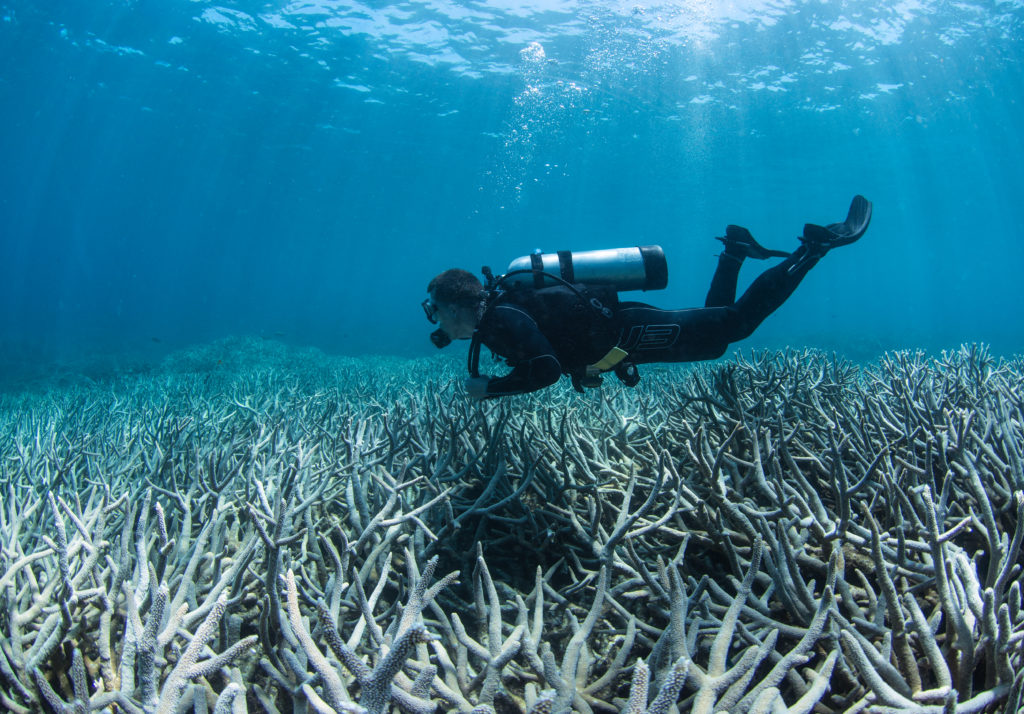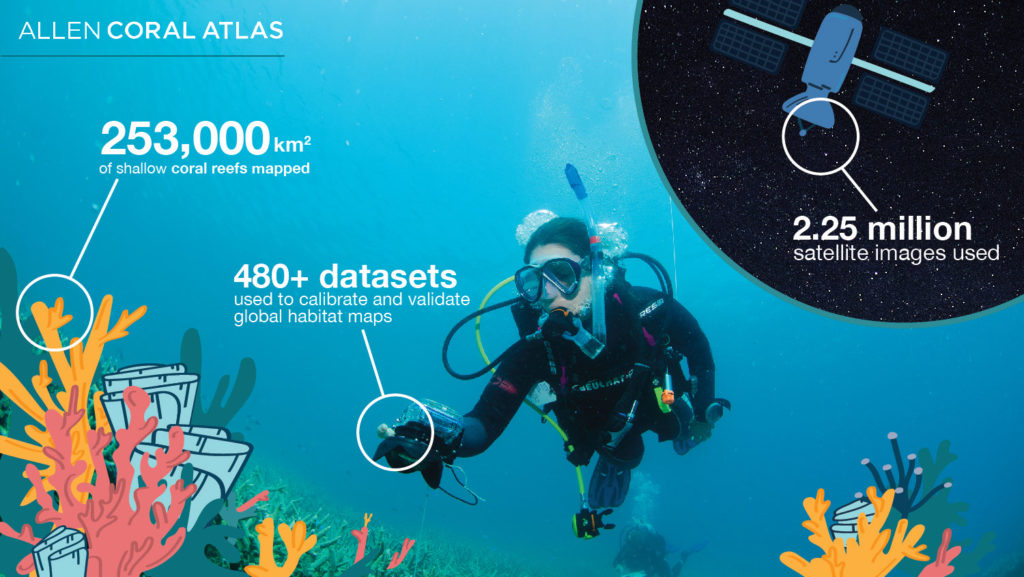It’s October, a time when eerie legends come alive and the world’s most frightening monsters are out to play. But among the goblins, ghosts, and creepy clowns, here at CORAL, there’s a different type of beast that truly spooks us—climate change.
Sure, climate change doesn’t look like a typical monster. It doesn’t have fangs like a vampire or howl like a werewolf. But climate change is real and more terrifying than anything you’ll encounter on Halloween night. In fact, it’s threatening our planet each and every day.
Climate change is responsible for an increased frequency and intensity of natural disasters, a dramatic rise in sea level, and a devastating decline in biodiversity. It contributes to food insecurity and impacts human health. And for our beautiful, valuable coral reefs—warming ocean temperatures threaten their existence entirely. That’s why at CORAL, we’ve turned science into action and committed to helping coral reefs adapt to a changing climate.
How Does Climate Change Impact Coral Reefs
Corals grow best in a temperature range of 73° to 84° F, and most corals are living close to their upper thermal limit. When ocean waters are too warm, in addition to direct threats like overfishing or water pollution, corals get stressed.

In reaction to the stress, hard corals expel small, symbiotic algae called zooxanthellae, which live in the coral tissue and act as their primary food source. Without zooxanthellae, corals get sick and enter a “bleached state.” Their notably bright, vibrant colors turn to ghostly white, and if left bleached for too long, they will die.
According to a recent international report released by the Global Coral Reef Monitoring Network, large scale coral bleaching events—caused by climate change—are the greatest disturbance to reefs. In fact, these events have contributed to the loss of at least 14 percent of the world’s corals in the last decade.
How to Save Coral Reefs
Corals have survived for a long time and are known for their resilience. Research shows that corals can adapt to a changing climate if we slow down emissions and reduce local stressors.
In contribution to a worldwide effort, we’re partnering with the Allen Coral Atlas, a comprehensive map and monitoring system of the world’s shallow water coral reefs. This new, innovative tool uses satellites to detect coral bleaching in real time—which will be a vital resource to push policies and take urgent, necessary action.

Andrea Rivera-Sosa, CORAL’s Project and Outreach Manager, is contributing to the project by working with a global network of field scientists, who will get into the water during a bleaching event to verify what the satellites are detecting in space. “Climate change is a serious issue affecting coral reefs,” says Rivera-Sosa. “This tool provides evidence of bleaching that we hope can be leveraged to decision makers to help reduce the impacts of climate change at the global scale.”
In addition to this worldwide effort, we are also working at the local level to mitigate direct threats to reefs, which make it harder for corals to adapt to climate change. This includes addressing overfishing and minimizing pollutants that enter ocean waters.
Join the Fight to Save Coral Reefs
There’s no question about it—we have a lot of work to do. Governments, businesses, and individuals all need to take urgent action, or risk losing the world’s most valuable and vulnerable ecosystem.
So this Halloween, don’t fret about those silly zombies, witches, and killer robots. Instead, join us as we face the scariest monster of them all—climate change.
To learn more, visit coral.org/give.
